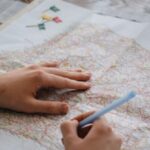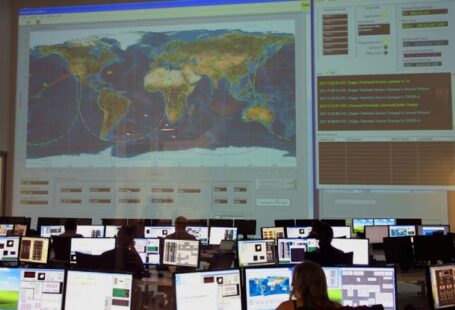Population density maps are powerful tools that provide valuable insights into the distribution of people in a given area. By visualizing population density, researchers, urban planners, and policymakers can make informed decisions regarding resource allocation, infrastructure development, and emergency response planning. In this article, we will explore the steps involved in creating a population density map and the tools and techniques that can help you accomplish this task effectively.
Understanding Population Density
Before diving into the process of creating a population density map, it is essential to understand what population density represents. Population density is a measure of the number of people living in a specific area, typically expressed as the number of individuals per square kilometer or square mile. By mapping population density, you can identify areas of high and low population concentration, which can inform various planning and decision-making processes.
Gathering Data
The first step in creating a population density map is to gather relevant data. Population data is typically available from census bureaus, government agencies, and research institutions. You will need data that provides information on the total population of an area as well as the geographical boundaries of different regions within that area. Additionally, demographic data such as age, gender, and socioeconomic status can also be useful in creating more detailed and informative population density maps.
Utilizing Geographic Information Systems (GIS)
Geographic Information Systems (GIS) are powerful tools that allow you to visualize and analyze spatial data effectively. GIS software enables you to overlay different datasets, such as population data and geographical boundaries, to create detailed maps that highlight population density patterns. By using GIS, you can manipulate and analyze data to generate visual representations that can aid in decision-making processes.
Creating a Heat Map
One of the most common techniques for visualizing population density is to create a heat map. Heat maps use color gradients to represent the intensity of a particular phenomenon across a geographic area. In the case of population density maps, darker shades indicate higher population concentrations, while lighter shades represent lower population densities. By creating a heat map, you can quickly identify areas of interest and patterns in population distribution.
Utilizing Remote Sensing Data
Remote sensing data, such as satellite imagery, can also be valuable in creating population density maps. Satellite images provide detailed information about land use, urban development, and infrastructure, which can help you better understand population distribution patterns. By integrating remote sensing data with population data, you can create comprehensive and accurate population density maps that reflect the real-world conditions of an area.
Incorporating Machine Learning Techniques
Machine learning techniques can enhance the accuracy and efficiency of population density mapping. By utilizing algorithms that can analyze and process large datasets, you can extract valuable insights and patterns from population data. Machine learning can help you predict population density trends, identify spatial correlations, and generate predictive models that can inform future planning and decision-making processes.
Visualizing Trends and Patterns
Once you have created a population density map, it is essential to visualize and interpret the trends and patterns present in the data. Look for clusters of high population density, identify areas of rapid population growth, and compare population distribution across different regions. By analyzing these trends, you can gain a deeper understanding of the factors influencing population density and make data-driven decisions based on your findings.
Conclusion
Creating a population density map is a complex yet rewarding process that offers valuable insights into the distribution of people within a given area. By following the steps outlined in this article and utilizing the tools and techniques discussed, you can develop informative and visually appealing population density maps that can guide planning, decision-making, and policy development. Whether you are a researcher, urban planner, or policymaker, population density maps can be invaluable assets in understanding and addressing the needs of diverse populations.





